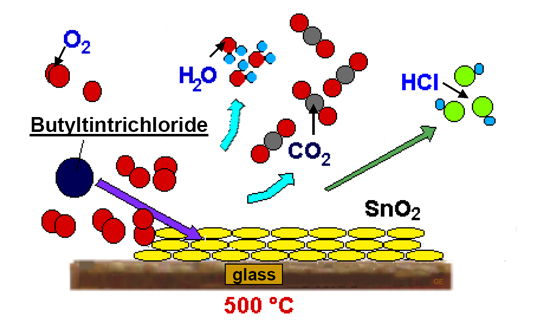Surface treatment for glass packaging
Surface treatments are done to reinforce the strength of the external skin of the vial, to reduce breakage and bump checks. This kind of treatment is done on the hot bottles before they enter the annealing lehr. So called Hot-end treatment

Examples of hot-end treatment use:
- Syrup bottles
- Lightweight infusion bottles (type II)
- Large vials for lyophilisation (this also requires the cold-end treatment).
Glass is a mechanically resistant material the resistance of which depends on its surface. The presence of micro-cracks caused by abrasion or shocks to the surface considerably decreases its packing resistance. Without any surface treatment it is some times difficult to convey the bottles to the end of the production line without scratching them and thus spoiling their mechanical resistance.
Purpose of surface treatment
To decrease the abrasion factor between items to facilitate handling, conveyance on production lines and transportation by protecting the glass against any risk of scratching. What it all comes down to is to reinforce the strength of the external skin of the vial, to reduce breakage and bump checks.
Soorten oppervlaktebehandeling:
Types of surface treatment:
- Surface treatment of bottles through:
- Application of a metallic oxide layer (hot treatment)
- Application of a lubricating layer (cold treatment).
Hot treatment
The goal is to form a layer of tin oxide on the external surface of the bottle by burning an organo-metalic compound.

Quality control
- Equipment made by AGR to measure the thickness of the tin oxide layer on the external surface. Results are reported in CTUs (Coating Thickness Units).
- Measurements made in QC laboratory based on sampling during production.
Process validation
- Detection/quantification by Extractable
- Results: less than 7 µg per bottle.
Cold treatment
- Application of a lubricating layer.
- Product: Simulsol M52 (monostearate- or polyoethylene glycol-based)
- Water soluble
- Reduces the abrasion factor, facilitates sliding of the bottles.
The cold treatment works better if the external surface already has an oxide layer (hot treatment).






